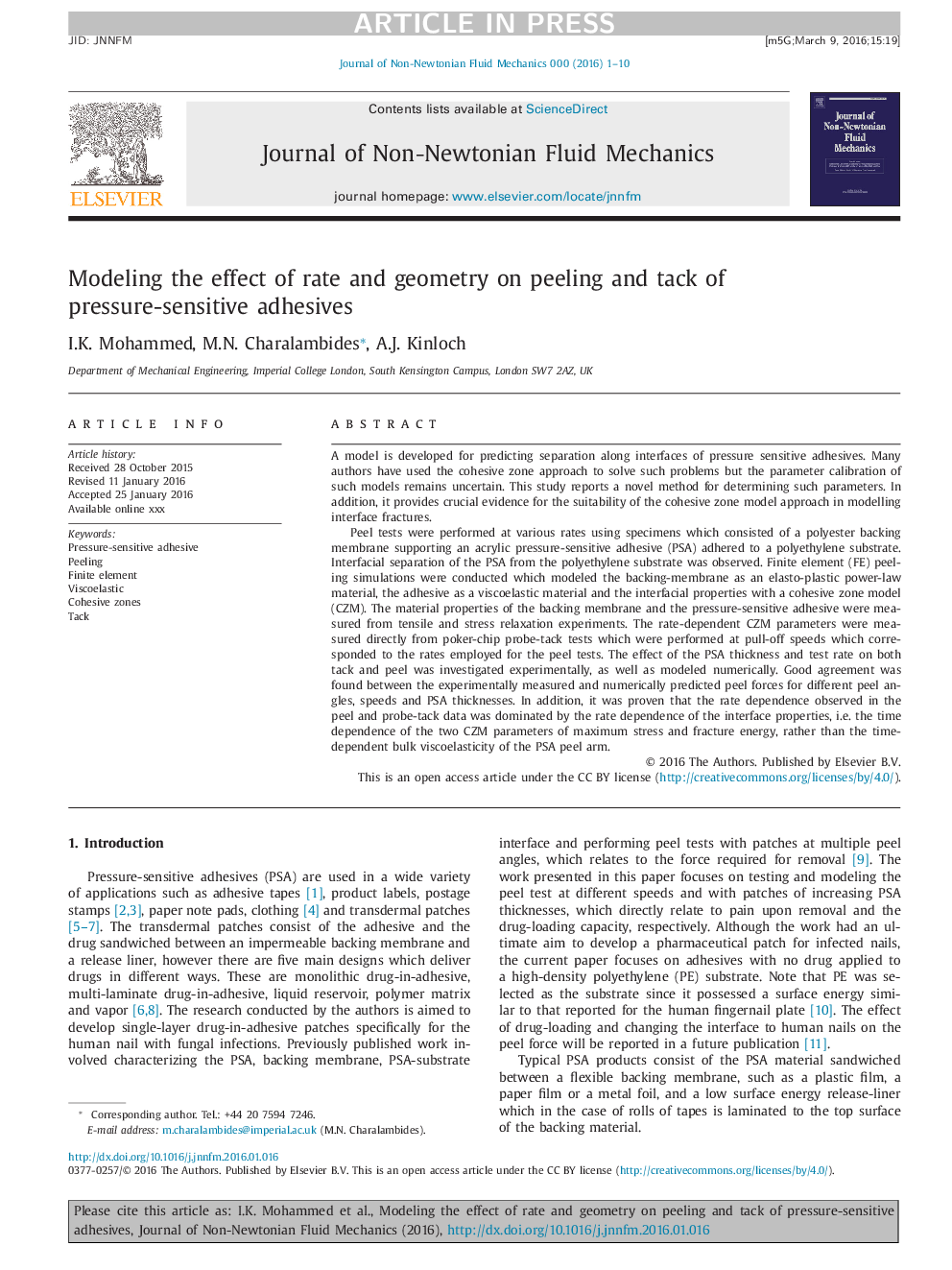| Article ID | Journal | Published Year | Pages | File Type |
|---|---|---|---|---|
| 7061186 | Journal of Non-Newtonian Fluid Mechanics | 2016 | 10 Pages |
Abstract
Peel tests were performed at various rates using specimens which consisted of a polyester backing membrane supporting an acrylic pressure-sensitive adhesive (PSA) adhered to a polyethylene substrate. Interfacial separation of the PSA from the polyethylene substrate was observed. Finite element (FE) peeling simulations were conducted which modeled the backing-membrane as an elasto-plastic power-law material, the adhesive as a viscoelastic material and the interfacial properties with a cohesive zone model (CZM). The material properties of the backing membrane and the pressure-sensitive adhesive were measured from tensile and stress relaxation experiments. The rate-dependent CZM parameters were measured directly from poker-chip probe-tack tests which were performed at pull-off speeds which corresponded to the rates employed for the peel tests. The effect of the PSA thickness and test rate on both tack and peel was investigated experimentally, as well as modeled numerically. Good agreement was found between the experimentally measured and numerically predicted peel forces for different peel angles, speeds and PSA thicknesses. In addition, it was proven that the rate dependence observed in the peel and probe-tack data was dominated by the rate dependence of the interface properties, i.e. the time dependence of the two CZM parameters of maximum stress and fracture energy, rather than the time-dependent bulk viscoelasticity of the PSA peel arm.
Related Topics
Physical Sciences and Engineering
Chemical Engineering
Fluid Flow and Transfer Processes
Authors
I.K. Mohammed, M.N. Charalambides, A.J. Kinloch,
